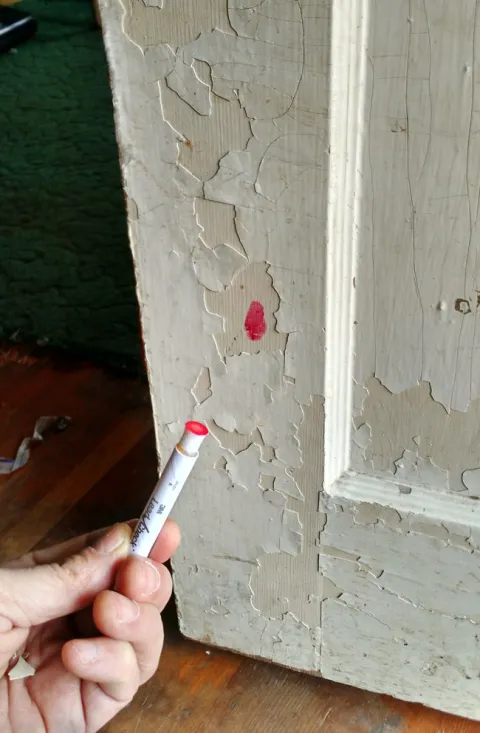
In Your Home
The most effective way to find out if your home has lead paint is through a certified lead-based paint inspector or risk assessor. An inspector can tell you if there is lead in the home. A risk assessor can tell you the extent of the hazard.
The older the home, the more likely lead paint was used. This is especially true for homes built before 1940. Lead-based paint was used until it was banned for residential use in 1978.
The presence of lead paint does not necessarily mean it's a hazard. To present a health threat, it must somehow enter the body. Paint that is well-cared for generally does not pose a danger.
However, even in well-maintained homes, friction and impact surfaces, such as door jambs or widows, can create fine lead dust. This dust can get onto children's fingers and hands and then into their mouth, where it is swallowed.
Home painting and repair projects can also create dangerous lead dust. Learn about lead-safe painting and remodeling»
Free Home Assessment
Portland Regional Lead Hazard Control Program
Evaluates lead hazards and offers financial assistance to reduce lead-based paint hazards in homes occupied by qualified low- and moderate-income households. If your household has a child under 6 years old, you may be eligible for assistance.
Home Test Kits
Results for home lead paint test kits may not always be accurate. It can only tell you if lead is present on a surface. It cannot tell you how much lead there is, whether it's a hazard, or what needs to be done to repair the hazard.
More Information
Oregon Lead Poisoning Prevention Program
Lead-safe remodeling and painting
Oregon Construction Contractors Board
License requirements for lead-based paint removal
In Toys
Find out about toy recalls from the Consumer Product Safety Commission
If your child has played with a toy on the recall list (especially if they often put toys in their mouth) ask your doctor if they need a blood lead test. Testing your children for lead is the best way to find out if they've been exposed.
Remember that while toys are one concerning source for lead poisoning, many children in the U.S. are exposed to lead through contact with old paint in housing, deteriorated paint, settled house dust and bare contaminated soil.
More about other lead hazards»
Questions? Call the Leadline
503-988-4000
leadline@multco.us
Lead prevention information and referral. Spanish-speaking staff and interpreters in other languages available.
